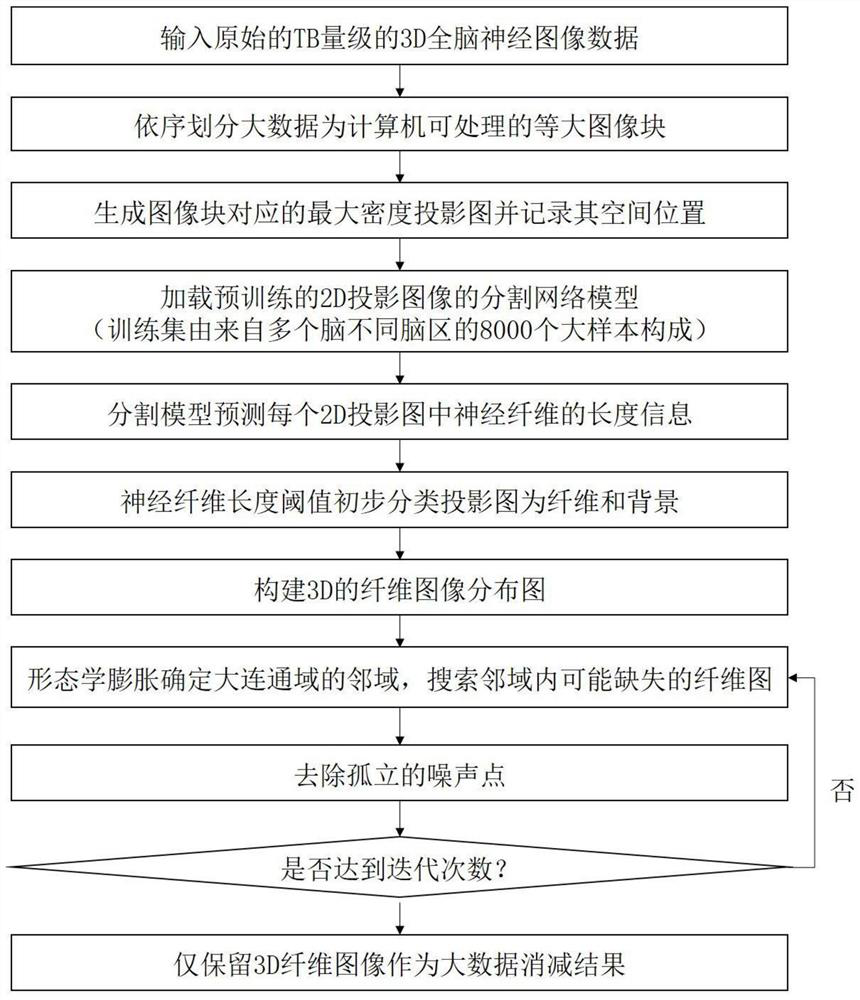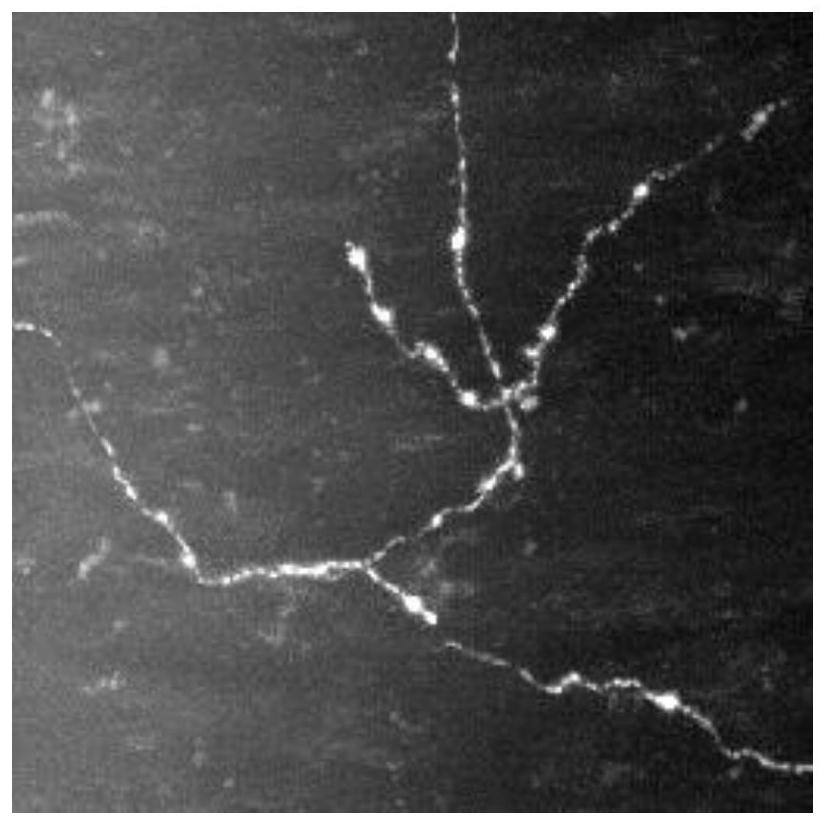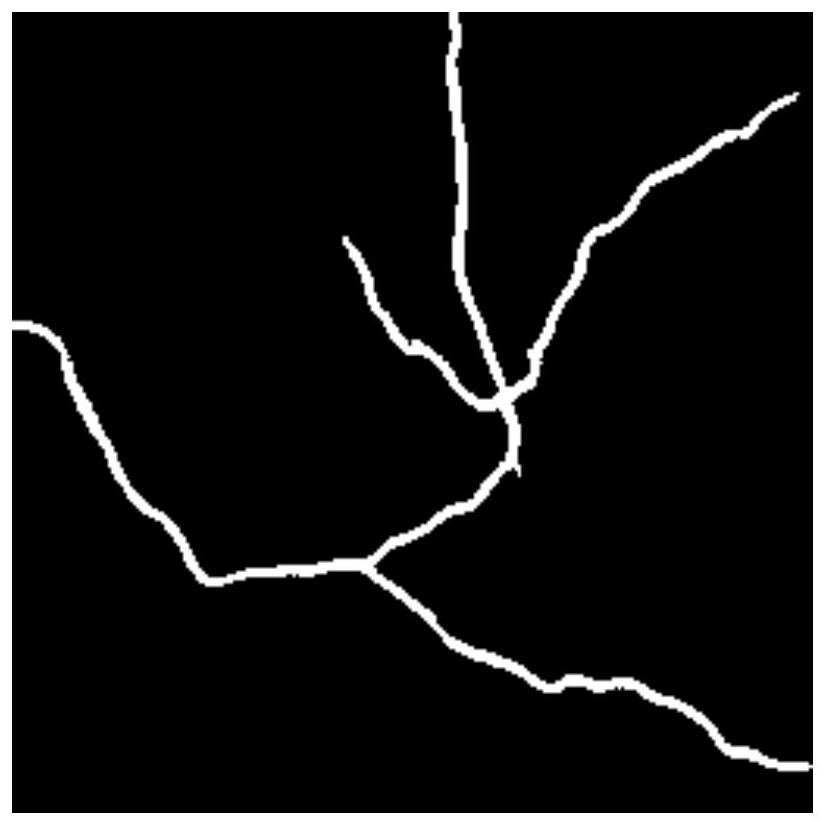Method and system for terabyte-level brain nerve fiber data reduction based on deep learning
A neural fiber and deep learning technology, applied in the field of image processing, to achieve the effect of fast segmentation, wide application range, and alleviating the imbalance of positive and negative samples
- Summary
- Abstract
- Description
- Claims
- Application Information
AI Technical Summary
Problems solved by technology
Method used
Image
Examples
Embodiment 1
[0045] In the present embodiment, the method for reducing the whole brain data of mice with TB level sparsity comprises the following steps:
[0046] S1: Obtain the image to be tested and construct a whole brain test data set.
[0047] For example, the original image is selected from a mouse brain slice image obtained by a fluorescence microsection imaging system or a functional two-photon confocal imaging microscope. The test image data set is from the coronal slice data of the whole brain, and every 200 layers of coronal slices are used for maximum projection (the selection of the number of layers directly determines the size of the data volume of the data set to be tested; of course, in addition to 200 layers, there are also The specific number of layers can be adjusted according to the actual situation; when adjusting the number of layers, the quality of the projection data should be considered to avoid: i. the number of layers is too small, and the nerve fiber information...
PUM
 Login to View More
Login to View More Abstract
Description
Claims
Application Information
 Login to View More
Login to View More - R&D
- Intellectual Property
- Life Sciences
- Materials
- Tech Scout
- Unparalleled Data Quality
- Higher Quality Content
- 60% Fewer Hallucinations
Browse by: Latest US Patents, China's latest patents, Technical Efficacy Thesaurus, Application Domain, Technology Topic, Popular Technical Reports.
© 2025 PatSnap. All rights reserved.Legal|Privacy policy|Modern Slavery Act Transparency Statement|Sitemap|About US| Contact US: help@patsnap.com



